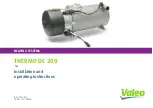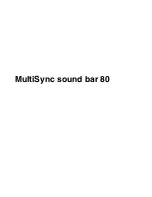
5
2.1 Health Hazard Information
The actual process of welding is one that can
cause a variety of hazards. All appropriate
safety equipment should be worn at all times,
i.e. headwear, respiratory, hand and body
protection. Electrical equipment should be
used in accordance with the manufacturer’s
recommendations.
Eyes:
The process produces ultra violet rays that
can injure and cause permanent damage.
Fumes can cause irritation.
Skin:
Arc rays are dangerous to uncovered skin.
Inhalation:
Welding fumes and gases are dangerous to
the health of the operator and to those in
close proximity. The aggravation of pre-existing
respiratory or allergic conditions may occur in
some workers. Excessive exposure may cause
conditions such as nausea, dizziness, dryness
and irritation of eyes, nose and throat.
2.2 Personal Protection
Respiratory
Confined space welding should be carried out
with the aid of a fume respirator or air supplied
respirator as per AS/NZS 1715 and AS/NZS
1716 Standards.
• You must always have enough ventilation in
confined spaces. Be alert to this at all times.
• Keep your head out of the fumes rising from
the arc.
• Fumes from the welding of some metals could
have an adverse effect on your health. Don’t
breathe them in. If you are welding on material
such as stainless steel, nickel, nickel alloys
or galvanised steel, further precautions are
necessary.
• Wear a respirator when natural or forced
ventilation is not good enough.
Eye protection
A welding helmet with the appropriate welding
filter lens for the operation must be worn at all
times in the work environment. The welding arc
and the reflecting arc flash gives out ultraviolet
and infrared rays. Protective welding screen and
goggles should be provided for others working
in the same area.
Clothing
Suitable clothing must be worn to prevent
excessive exposure to UV radiation and
sparks. An adjustable helmet, flameproof loose
fitting cotton clothing buttoned to the neck,
protective leather gloves, spats, apron and steel
capped safety boots are highly recommended.
Recommended filter shades for
arc welding
Less than 150 amps
Shade 10*
150 to 250 amps
Shade 11*
250 to 300 amps
Shade 12
300 to 350 amps
Shade 13
Over 350 amps
Shade 14
*Use one shade darker for aluminium
2.0 Recommended Safety Precautions


































